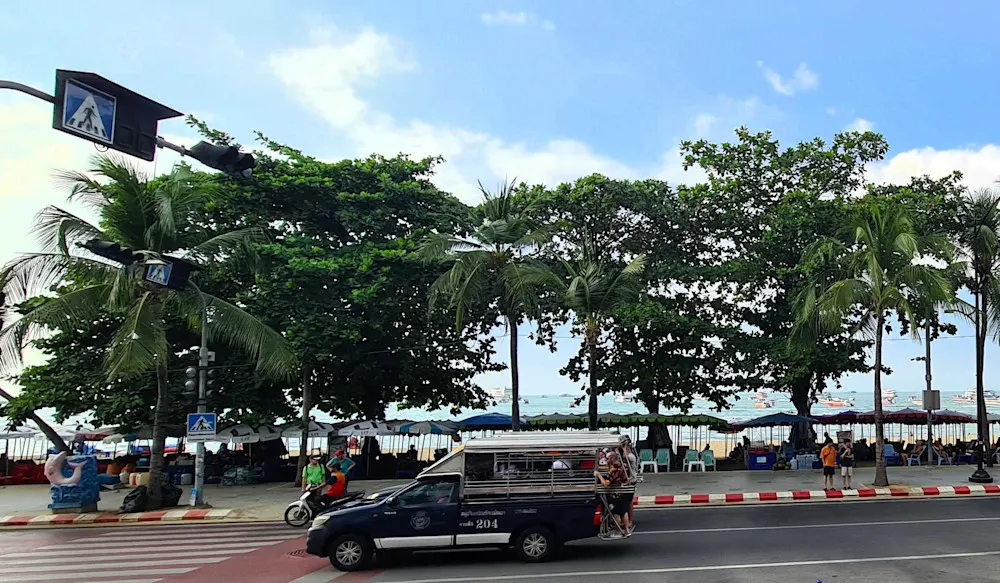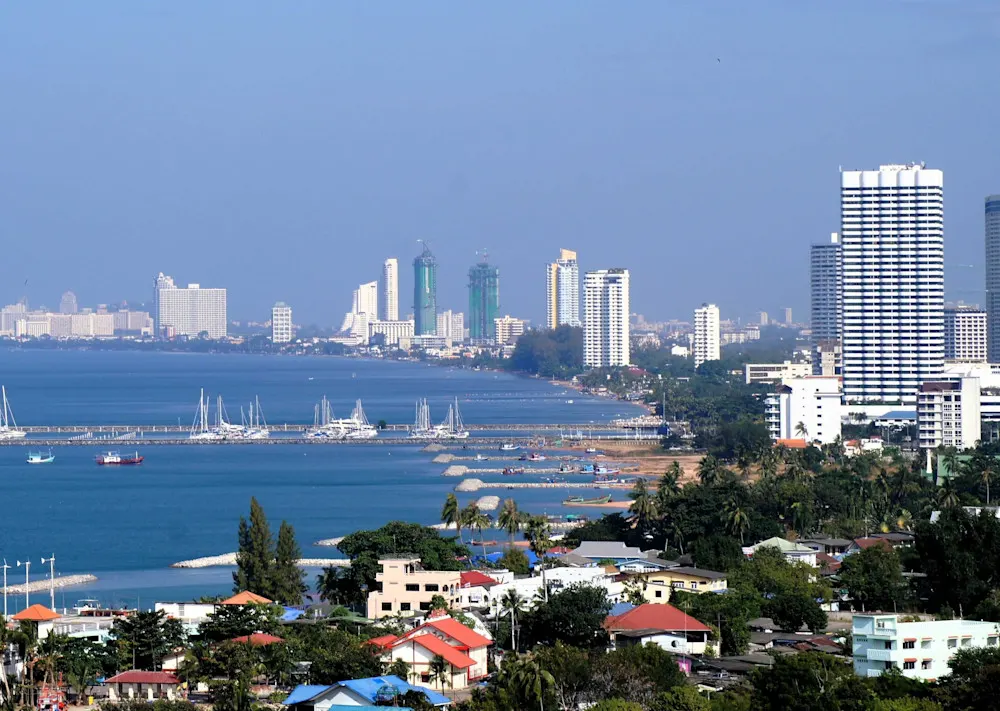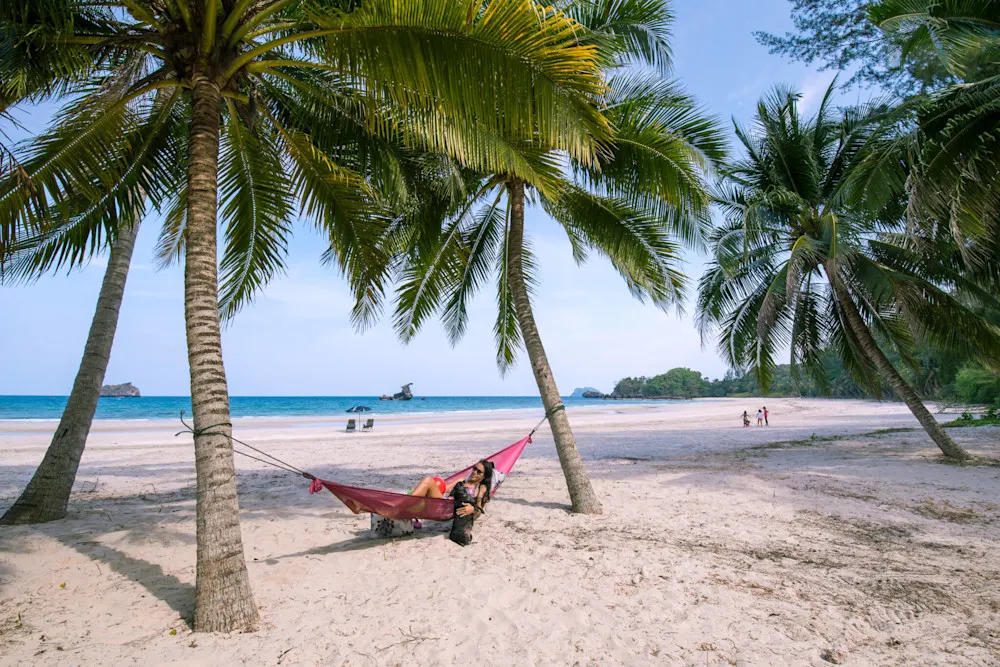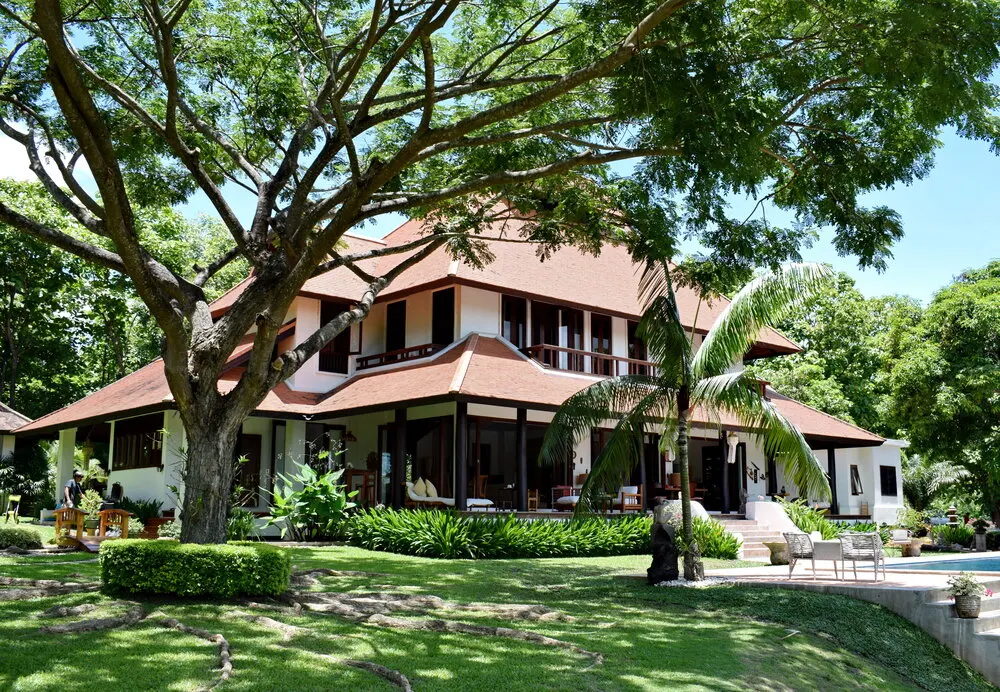If you look up the most-visited tourist destinations in the U.S., places like Walt Disney World near Orlando, Florida, and the Las Vegas Strip in Nevada consistently rank near the top. Do a similar search for international travel, and Thailand consistently lands among the most sought-after countries to visit.
I’ve had the rare opportunity to experience all three. I grew up in Orlando, spent several years living in Las Vegas, and have called Thailand home for the past 25 years. So, when it comes to living in or near a tourist town, I’ve seen the good, the bad, and everything in between.
Here are five compelling reasons why it’s a smart move to live near a tourist town — just not directly in one.
Your chance to retire overseas now
Your chance to retire overseas now
Learn more about Thailand and other destinations by signing up to our daily IL Postcards e-letter and we'll immediately send you a free report: 20 Countries Compared, Contrasted, Ranked, and Rated.
You don’t have to be rich to enjoy a pampered retirement, you just need to know where to go.
With our 34th Annual Global Retirement Index, our experts hand you a detailed roadmap. Details and a Special Offer Here!

By submitting your email address, you will receive a free subscription to IL Postcards, Overseas Dream Home, The Untourist Daily and special offers from International Living and our affiliates. You can unsubscribe at any time, and we encourage you to read more about our Privacy Policy.
1. Easy Access to Fun Without the Chaos

Living near places like Disney World or the Las Vegas Strip has its perks. When friends or family come to visit, you don’t have to brainstorm activities — the entertainment practically plans itself. Theme parks, live shows, concerts, festivals, and endless dining options are all close at hand.
Thailand offers the same magic. Friends who’ve visited me here often call it the trip of a lifetime. From golden temples and pristine beaches to elephant rides and street food feasts, the experience is unforgettable.
However, there’s a flip side: living in a tourist hotspot often means enduring endless crowds, unpredictable traffic, and overstimulated visitors who aren't always on their best behavior. Tourists are usually navigating unfamiliar roads, in strange vehicles, sometimes even driving on the opposite side than they’re used to. Add in the party atmosphere, and it can feel like you’re living inside a carnival 24/7.
The sweet spot is finding a peaceful place within easy reach of the excitement. When I lived in Phuket, I chose Nai Harn Beach on the quiet southern end of the island, just 30 minutes from the wild nightlife of Patong. I could immerse myself in the chaos for an evening, then retreat to serenity.
I did the same thing in Pattaya. For years, I lived in Ban Amphur, just 20 minutes from the city. When guests came, we’d call a Grab car, have dinner at a rooftop bar in town, then head home to unwind at a quiet beach bar by the water. These days, I live in Jomtien Beach. From my balcony, I can watch Pattaya’s International Fireworks Festival every November without ever battling the gridlock or the crowds.

2. Enjoy World-Class Food Without the Guilt
One of the biggest advantages of living near a tourist hub, especially in a place like Thailand, is the incredible variety of food. Whether it’s fine dining, quirky local spots, or fast food from chains you’ve never seen before, Thai tourist towns are culinary playgrounds.
In areas like Koh Samui, Phuket, Chiang Mai, Pattaya, and Hua Hin, markets and grocery stores cater to international palates. You’ll find everything from fresh Thai herbs to imported cheeses. Western-style supermarkets, such as Tesco Lotus, Makro, and Villa Market, are stocked for long-stay tourists and digital nomads renting Airbnb properties with full kitchens.
But this convenience comes with a trap: it’s easy to fall back into your old eating habits. You might find yourself frequenting Starbucks, McDonald's, or Dairy Queen — guilty as charged on that last one. I’ve seen expats eat like they never left home, which defeats the purpose of immersing yourself in a new culture.
My solution? Live slightly outside the tourist zone, where local markets and mom-and-pop restaurants are more common. I’ve built relationships with vendors and feel a genuine pull to support them. Why hit up KFC when I can get better fried chicken from Lek, my neighborhood “chicken lady”? Why spend $5 at Starbucks when Arty brews me hilltribe coffee from Chiang Rai for half the price?
Living just far enough away helps you avoid impulse decisions and encourages you to eat locally and affordably, while still keeping international options within reach.
3. Lower Rents and Better Investment Potential

Tourist towns tend to be expensive — no surprise there. The land is more valuable, and everything from beer to rent reflects that. The reason is simple: land in prime tourist areas is used to generate maximum revenue. Like the Monopoly board game, building houses (or better yet, hotels) drives up income potential.
For expats who own property, this can be a good thing. I saw it in Phuket when I bought land in a remote part of the island before a new bypass road improved access. Building expat-friendly homes there turned into a solid investment. The same happened in Jomtien Beach. When I bought condos in 2009, they stayed occupied with expats who enjoyed the quiet surroundings and affordable rates. Now it’s booming, and the value of my property has risen sharply.
But rising popularity comes at a cost — eventually, the once-quiet and affordable neighborhood gets swallowed by the tourist sprawl. When that happens, it’s time to look for the next edge of town.
Tourist islands, in particular, carry an “Island Inflation Effect.” Since everything has to be flown or ferried in, prices go up, and not just for tourists. Residents pay more for food, fuel, and daily essentials. I’ve paid double for a basic plate of chicken and rice in Koh Samui, simply because I was stranded in tourist-infested Chaweng Beach and had no choice.
There are two ways to deal with this:
Live in a remote part of the island. In Koh Samui, Baan Taling Ngam is quieter and cheaper than Chaweng or Lamai. Or go even more rustic and move to neighboring Koh Phangan — no airport, more chill, with a Bohemian and budget-conscious expat community.
Live near an island, not on it. Consider mainland coastal towns like Chumphon (instead of Samui) or Krabi and Phang Nga (instead of Phuket or Phi Phi). You’ll have ferry access to the islands without the daily costs of island life.
The same strategy works inland. Love the north? Skip Chiang Mai’s tourist-heavy Old City and Niemenhamn and live in Mae Rim, Hang Dong, or Lamphun. Prefer seaside Hua Hin? Try quieter, cheaper Cha Am, just 30 minutes away.
Keep in mind, any tourist town worth visiting is eventually going to creep towards and affect your little hideaway, making investors smile and renters seek greener pastures.

Your chance to retire overseas now
Your chance to retire overseas now
Learn more about Thailand and other destinations by signing up to our daily IL Postcards e-letter and we'll immediately send you a free report: 20 Countries Compared, Contrasted, Ranked, and Rated.
You don’t have to be rich to enjoy a pampered retirement, you just need to know where to go.
With our 34th Annual Global Retirement Index, our experts hand you a detailed roadmap. Details and a Special Offer Here!

By submitting your email address, you will receive a free subscription to IL Postcards, Overseas Dream Home, The Untourist Daily and special offers from International Living and our affiliates. You can unsubscribe at any time, and we encourage you to read more about our Privacy Policy.
4. Better Transport Minus the Traffic Headaches
Tourist towns almost always have better infrastructure — more buses and trains, better roads, and more ride-hailing services. The trade-off is often congestion and parking headaches.
But if you live nearby rather than in the center, you can still benefit. In Southeast Asia, apps like Grab and Bolt are lifesavers, especially in major cities and towns. Even when I was on the edge of Phnom Penh or Siem Reap in Cambodia, I never had to wait more than three minutes for a ride.
For me, a hybrid approach works best. I’ll drive 90 minutes from Jomtien to Bangkok’s Suvarnabhumi Airport, park my car for about $4.50 a day, then take the Airport Rail Link into the city. From there, I use the Skytrain or Metro to get around — no traffic, no stress.
Public transportation designed for tourists is also fair game for locals and expats. Whether it’s hopping on a songtaew (baht bus) in Pattaya or catching a ferry in Phuket, you can use it without the tourist prices if you know the local rates.
The biggest transportation win is proximity to international airports. More flight options, better deals, and fewer travel headaches. My rule of thumb: if it takes more than two hours to get to a major airport, it’s too far.
And here’s a tip for expats and investors: follow the airport projects. When a new international airport is built, growth and property values typically follow. Think Bangkok’s Suvarnabhumi — once isolated, now a thriving mini-city. The same will likely happen in:
Bulacan International Airport, north of Manila (opening 2028)
Techo Takhmao Airport, near Phnom Penh (opening late 2025)
Long Thanh International Airport, near Ho Chi Minh City (expected 2026)
All of these airports are located far from the centers of the cities they serve. If you’re thinking long-term, these places are worth keeping an eye on.
5. Stronger, More Stable Expat Communities
Tourist towns attract people from all over the world, but that doesn’t always make for meaningful connections. Many tourists and short-term expats arrive in a whirlwind of energy and spending, but then disappear as quickly as they came. I saw it in Las Vegas, and I’ve seen it here in Thailand.
That constant churn can leave you with a long list of “people I used to know,” but not many deep friendships. Even folks who plan to stay often get lured to another “better” spot or end up heading home.
That’s why I recommend starting in the tourist zone to get your bearings, then pay attention to where people move when they’re ready to settle down. Ask, “Where do the long-stay expats live?” and you’ll start hearing the same neighborhoods mentioned over and over.
In Pattaya, many of us live 20–30 minutes outside the chaos, in areas such as Jomtien, Na Jomtien, Ban Amphur, or Bang Sare. Families tend to gravitate toward suburban East Pattaya, where things are quieter, greener, and housing is more affordable. You’ll still see us in town grabbing hard-to-find items at the big grocery stores or watching a movie, but when it’s time to go home, we retreat to calmer surroundings — and more importantly, real community.
These areas attract people who are here for the long haul, not just a few wild weeks. That makes it easier to build friendships, meet your neighbors, and feel like you’re actually living, not just passing through.
Enjoy the Perks Before the Crowds Arrive
Eventually, every great “edge of town” becomes the center of something bigger. That’s what’s happening where I live right now. High-rises are going up, the skyline is changing, and Pattaya’s energy is creeping closer.
I’ll enjoy the capital gains on my properties, then likely move on in the next three years. My sights are set on Rayong Province, further down the Eastern Seaboard.
Rayong is ideally located just an hour from Pattaya and two hours from Bangkok. It boasts gorgeous beaches, such as Mae Ramphueng, Mae Phim, and Koh Samet, as well as access to two international airports, and is home to some of the best seafood in Thailand. There are already plenty of condos and gated communities, but the pace of life is still peaceful, and the prices haven’t caught up yet. Since it is more suited for Thai domestic tourism, the growth is expected to be slow and decidedly non-commercial.
Living near a tourist town gives you the best of both worlds. You’re close enough to enjoy the food, fun, and infrastructure, but far enough away to maintain your sanity, save money, and build a meaningful life. So the next time you’re dreaming of your ideal home abroad, don’t aim for the spotlight. Find the sweet spot just outside its glow.
Your chance to retire overseas now
Your chance to retire overseas now
Learn more about Thailand and other destinations by signing up to our daily IL Postcards e-letter and we'll immediately send you a free report: 20 Countries Compared, Contrasted, Ranked, and Rated.
You don’t have to be rich to enjoy a pampered retirement, you just need to know where to go.
With our 34th Annual Global Retirement Index, our experts hand you a detailed roadmap. Details and a Special Offer Here!

By submitting your email address, you will receive a free subscription to IL Postcards, Overseas Dream Home, The Untourist Daily and special offers from International Living and our affiliates. You can unsubscribe at any time, and we encourage you to read more about our Privacy Policy.
